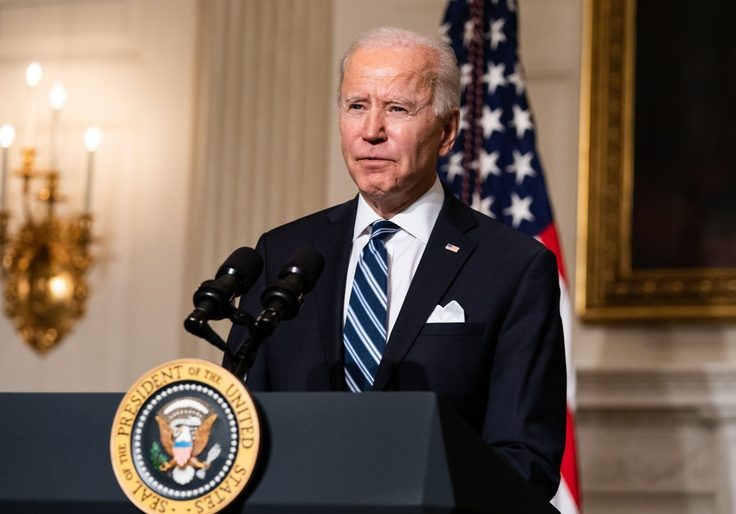Buried on page 95 of Joe Biden's COVID plan is an odd reference.
The plan outlines a special task force, consisting of "health equity" experts with "lived experience," that will develop recommendations to address data challenges associated with the pandemic—"including data intersectionality."
"Data intersectionality" sounds radical, but its definition is prosaic: establishing links between data sets or analyzing "data that cuts across race, gender, and other identities"—two things the government has been doing since the pandemic began.
Whatever the working definition of the term—the White House did not respond to request for comment—it's but one example of the spirit that animates the Biden plan, which consists of commonsense recommendations cloaked in radical jargon.
Again and again, the 200-page document disguises pragmatism as progressivism, using ideologically charged language to describe a mostly moderate set of policies. To wit: Biden's plan endorses targeted outreach to rural communities, reopening schools and businesses, and expanding vaccine eligibility to adults 65 and older. Taking a page from the populist playbook, it even calls to "secure the pandemic supply chain" so that the United States "is not dependent on other countries in a crisis"—the kind of industrial policy for which several Republican senators, including Tom Cotton (Ark.) and Josh Hawley (Mo.), have expressed support.
But almost all of these proposals are framed in far-left terms. Liberals and conservatives alike have wondered which wing of the Democratic Party, the reformist or the radical, will win out under Biden. If his early executive orders suggested the latter, his COVID plan offers tentative evidence for the former—provided leftists receive a rhetorical bone.
The plan throws them one with its focus on "equity," which it says has "been integrated throughout the entirety of" Biden's COVID response—but which it also uses to justify policies that would disproportionately help white people.
Biden's plan does an about-face from the Centers for Disease Control and Prevention late last year, when the agency cited "equity" as a reason to vaccinate essential workers before the elderly, in part because the elderly skew white. The White House instead promises to "advance equity" along "rural/urban lines" in addition to racial ones. Rural Americans, it notes, have "higher rates of cigarette smoking, high blood pressure, and obesity," and thus "a higher risk of severe COVID-19." They're also whiter and older than the nation as a whole, meaning they stand to benefit disproportionately from an age-based vaccination scheme.
Such a scheme is what Biden's plan encourages—on equity grounds. "Adults 65 and older account for 16 percent of the U.S. population," the plan reads, "but 80 percent of COVID-19 deaths in the United States." It's the same disparity-based logic the CDC used to deprioritize the elderly; Biden has simply replaced race with age to justify a more pragmatic, popular policy, calling on states to make all adults 65 and up eligible for the vaccine.
Other race-neutral policies, such as reopening schools, are justified in a race-conscious way. "Students have lost months of learning as a result of school closures," Biden's team emphasizes, "and losses are particularly acute for lower-income students and students of color." That stance puts the president at odds with at least one of his backers; the Chicago Teachers Union, which endorsed Biden, claimed in December that the "push to reopen schools is rooted in racism, sexism, and misogyny."
This is the bet Biden seems to be making: The jargon of social justice will prove capacious enough to legitimize moderate politics to an immoderate base. That moderation manifests in goals Biden sets. He wants "a majority of K-8 schools safely open in 100 days," and to ensure that "small businesses have the funds they need to operate safely." Neither goal is especially ambitious, but both suggest a departure from the shutdown maximalism that has characterized his party's response to the pandemic.
The question is whether progressives will call his bluff. Unions have resisted reopening schools since the start of the pandemic, and on Tuesday CNN reported that "vaccine coverage is twice as high among white people on average than it is among black and Latino people." If these disparities persist, Biden's COVID team may decide to address them in an explicitly race-conscious way, collapsing the distinction between rhetoric and reality. Biden vowed last week to be "a president for all Americans." The execution of his COVID plan will be an early test of that promise.
